If you’ve ever had to deal with a pesky stain on your walls, you know how frustrating it can be to try and get rid of it. Whether it’s a splatter of paint, a smear of dirt, or discoloration caused by water damage, stains on walls can be unsightly and difficult to remove.
This article will discuss various methods for removing stains from walls, including using water and soap, baking soda and water, vinegar and water, and commercial cleaning products. We’ll also provide tips for identifying the type of stain you’re dealing with and choosing the most appropriate cleaning method.
So if you’re tired of looking at that stubborn stain on your wall, read for some helpful advice on getting rid of it for good!
Contents
- 1 Types of wall stains
- 2 Best wall stain remover
- 3 Removing stains from various surfaces
- 3.1 Removing grease stains from kitchen appliances
- 3.2 Removing stains from interior cinder block walls
- 3.3 Removing marks from walls with flat paint
- 3.4 Removing stains from non-washable wallpaper
- 3.5 Removing stains from wood paneling before painting
- 3.6 Removing yellowed wallpaper
- 3.7 Removing oil stains from the kitchen exhaust fan
- 3.8 Removing water stains from concrete block walls
- 4 Frequently Asked Questions
- 5 Conclusion
Types of wall stains
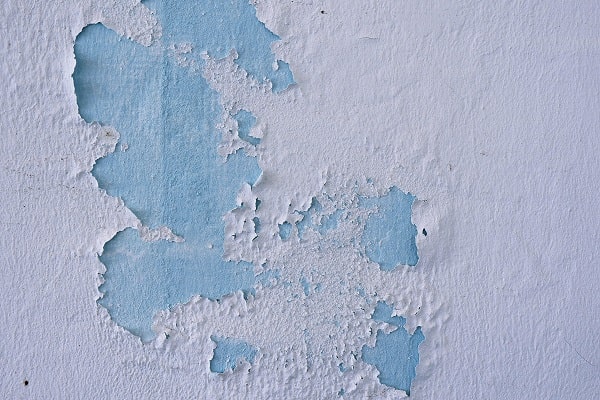
Several types of stains can appear on walls, including:
Water stains
These are caused by water damage and can be identified by their discolored or darkened appearance.
Rust stains
These are orange or brown and are caused by the presence of iron or steel in the wall.
Mold stains
Mold stains are usually black or green and are caused by mold or mildew on the wall.
Smoke stains
These are caused by smoke and can be identified by their black or gray color.
Ink stains
These are caused by the accidental spilling of ink and can be identified by their dark color.
Grease stains
These are caused by grease or oil on the wall and can be identified by their shiny appearance.
Dust and dirt stains
These are caused by the accumulation of dust and dirt on the wall and can be identified by their light color.
Best wall stain remover
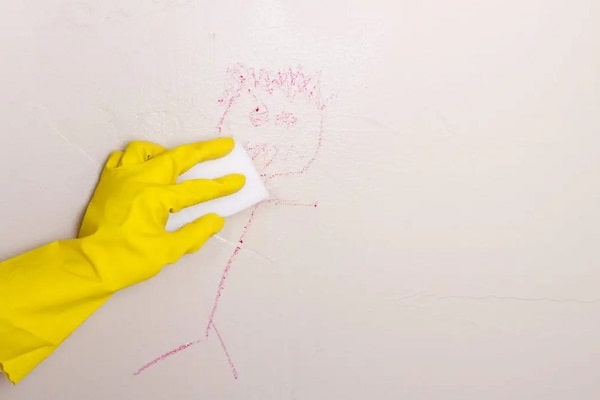
You can try a few different options to remove stains from walls. Here are a few general tips:
Water and soap
For water-based stains, such as coffee or wine, you can try wiping the stain with a damp cloth and mild soap. Rinse the cloth and continue to wipe until the stain is gone.
Baking soda and water
Mix a small amount of baking soda with water to create a paste, and then use a cloth to rub the paste onto the stain. Rinse the cloth and continue to wipe until the stain is gone.
Vinegar and water
Mix equal parts vinegar and water in a spray bottle, then spray the mixture onto the stain. Use a cloth to wipe the stain until it is gone.
Commercial cleaning products
There are also many commercial cleaning products that are specifically designed to remove stains from walls. Be sure to follow the instructions on the product and test it on a small, inconspicuous area of the wall before using it on a larger stain.
It’s important to note that some stains may be more difficult to remove than others and may require specialized cleaning products or techniques. Suppose you are unable to remove a stain using the methods described above. In that case, you may need to seek the advice of a professional cleaning service.
Removing stains from various surfaces
Removing stains from various surfaces in the home can be a challenging task. Still, it’s an essential aspect of maintaining a clean and well-kept living space. Different surfaces may require different cleaning methods and products, so it’s essential to remove stains from various home surfaces effectively.
Removing grease stains from kitchen appliances
One common surface in the kitchen that may need to be cleaned is the appliances. Try using hot water and dish soap to remove grease stains from kitchen appliances. Mix a small amount of dish soap with hot water and use a cloth or sponge to scrub the stain. Alternatively, you can use a degreaser or a mixture of vinegar and baking soda. Once you’ve applied the cleaning solution, wipe the surface with a dry cloth or paper towel.
Removing stains from interior cinder block walls
Interior cinder block walls may also need to be cleaned from time to time. To remove stains from these surfaces, try using water and bleach. Alternatively, you can use a pressure washer or scrub the surface with a brush or scrub pad.
If you have cinder block walls that have become damp or wet, it’s essential to dry them out to prevent mold and mildew from growing. To dry out cinder block walls, try using a dehumidifier, fans to circulate air, or a mixture of water and bleach to kill mold or mildew.
Removing marks from walls with flat paint
If you have marks on walls with flat paint, try using a magic eraser or a soft cloth to rub the stain gently. Alternatively, you can use a mild soap and water solution or a mixture of water and vinegar.
Removing stains from non-washable wallpaper
Non-washable wallpaper may also accumulate stains. Try using a soft cloth or sponge to remove stains from this type of wallpaper. Alternatively, you can use a mild soap and water solution or a mixture of water and vinegar.
Removing stains from wood paneling before painting
If you’re planning on painting wood paneling, cleaning the surface first to remove any stains or dirt is essential. To clean wood paneling before painting, try sanding down the surface to remove any imperfections. Alternatively, you can use a mixture of water and vinegar or a commercial cleaner specifically designed to remove wood stains.
Removing yellowed wallpaper
Yellowed wallpaper may also need to be cleaned. Try using a soft cloth or sponge to remove this type of stain. Alternatively, you can use a mild soap and water solution or a mixture of water and vinegar.
Removing oil stains from the kitchen exhaust fan
To remove these stains, try using a degreaser or a mixture of water and vinegar. Alternatively, a commercial cleaner can remove grease and oil stains. Once you’ve applied the cleaning solution, wipe the surface with a dry cloth or paper towel.
Removing water stains from concrete block walls
Water stains on concrete block walls may also need to be removed. To remove these stains, try using a mixture of water and vinegar or a commercial cleaner specifically designed for removing water stains from concrete. Alternatively, you can try scrubbing the stain with a brush or scrub pad.
Frequently Asked Questions
What is the best cleaner to use on paneling?
The best cleaner to use on paneling will depend on the type of paneling and the type of stain you are trying to remove. Here are a few general tips:
If you are trying to remove a specific stain, such as a grease or oil stain, you may need to use a more specialized cleaner. In this case, you can try using a commercial cleaner specifically designed for removing grease and oil stains, or you can try using a mixture of vinegar and water.
How do you remove stains from walls without damaging the paint?
Here are a few tips for removing stains from walls without damaging the paint:
Use a gentle cleaning solution: Avoid harsh or abrasive cleaners, as these can strip the paint or cause it to fade. Instead, use a mild cleaning solution, such as warm water and soap.
Use a soft cloth or sponge: A soft cloth or sponge will be less likely to damage the paint than a rough or abrasive scrubber.
Wipe gently: Don’t scrub the stain too hard, as this can cause the paint to become damaged or faded. Instead, gently wipe the stain using a circular motion.
Rinse frequently: If you use a cleaning solution, rinse your cloth or sponge frequently to avoid leaving a soapy residue. This can cause the paint to become discolored or faded.
Test the cleaner: Before using a cleaner on a larger stain, test it on a small, inconspicuous area of the wall to ensure that it does not damage the paint.
Can toothpaste remove stains on walls?
Toothpaste may be able to remove certain types of stains from walls. However, it is not a universal cleaner and may only work for some stains. Here are a few things to consider when using toothpaste to remove stains from walls:
Type of stain: Toothpaste is particularly effective at removing small, shallow stains caused by ink or marker. It may not be as effective at removing larger or deeper stains, such as those caused by water damage or mold.
Types of toothpaste: Different types have different ingredients and may be more or less effective at removing stains. For example, toothpaste that contains baking soda may be more effective at removing stains than toothpaste that does not.
Type of paint: Toothpaste may cause some types of paint to become discolored or faded. It is important to test the toothpaste on a small, inconspicuous area of the wall before using it on a larger stain to ensure that it does not cause damage.
Conclusion
Many different surfaces and stains may need to be removed from the home. From kitchen appliances and cabinets to interior cinder block walls and non-washable wallpaper, it’s essential to know the best methods and products for removing stains from various surfaces. You can effectively maintain a clean and well-kept living space using the right cleaning methods and products.

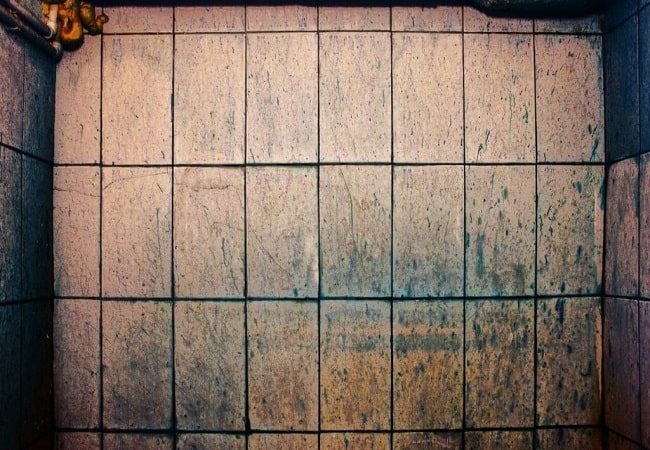
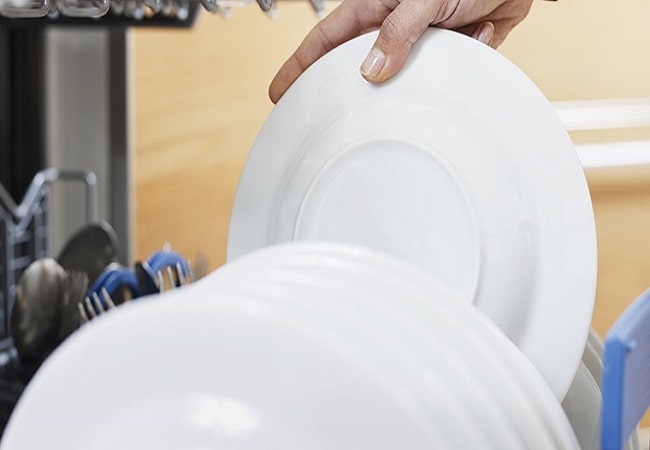
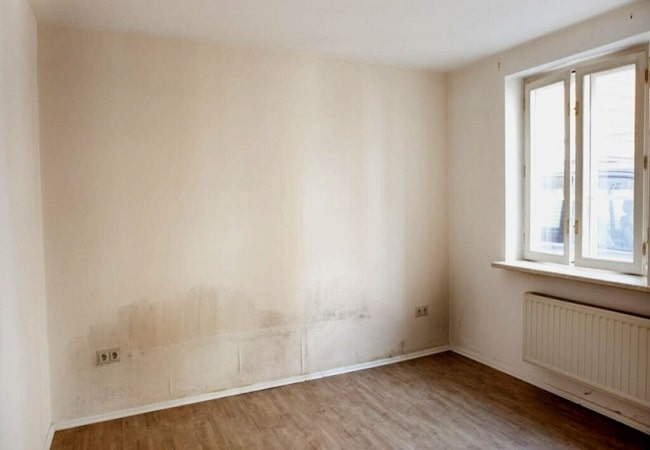
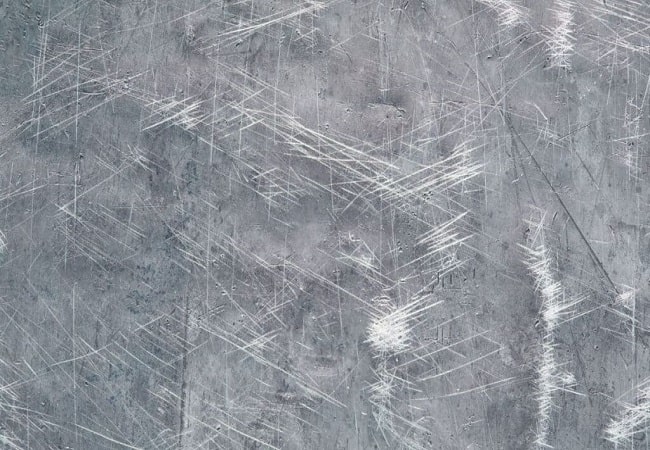
Leave a Reply